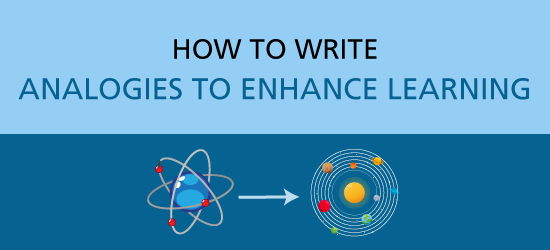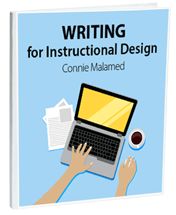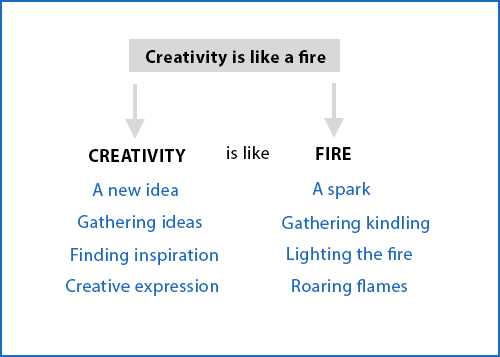
Analogies are a key component of human thinking and understanding. They’ve stimulated great feats of problem-solving and discovery. They are also a classic way to foster learning by applying prior knowledge to new concepts. But writing analogies for adult learners isn’t always easy. This article explores ways to write better analogies for learning.
Researchers say that a critical aspect of an effective analogy is that the two areas of comparison are superficially different. For example, stating that an atom is like a miniature solar system or that a database is like a filing cabinet.
This is because analogies are non-literal comparisons. They highlight one or more points of similarity between two very different things. They help learners construct new mental models by transferring knowledge from a known domain to an unknown domain.
Format of Analogies
Analogies often take the format that “A is like B” where “A” is an unknown abstract concept and “B” is something known, which is often something concrete. Analogy experts have their own terminology: the unfamiliar concept is the target and the familiar concept is the analog. In the analogy, “An IP address is like a street address” the IP address is the target and the street address is the analog.
How to Generate Effective Analogies
You may wish to use this mapping technique to come up with effective analogies. First, map the characteristics between two domains and see if there are sufficient relationships to make it work (shown below). Next, assess the differences between the target and the analog concepts and address the shortcomings of the analogy. Finally, evaluate the new representation.
Mapping is also a good practice activity for learners who are trying to understand a complex concept. Here is an example worksheet for mapping a factory to a cell that a teacher might use in the classroom. Why not ask adult learners to map analogies in an online exercise so they can better understand a concept?
Guidelines for Writing Analogies for Learning
Looking over the research, several factors stand out for making analogies effective. Some may seem obvious, but together they create a strong list of guidelines.
- Ensure learners really need an analogy. If they are already familiar with a concept, then don’t use one.
- Depending on the learner’s educational experience or familiarity with the language, you may need to explain what an analogy is.
- The similarity of the relationships between the domains in an analogy is important for making it work.
- Analogies based on familiar concepts are better understood.
- Clarify the structure of the familiar domain to avoid misconceptions. It’s difficult to know the extent of a learner’s background knowledge.
- Consider visualizing the familiar domain as concrete analogs work well.
- When you map target and analog domains, make sure the relationships are clear and unambiguous.
- The relations between the familiar and unfamiliar domains should form a cohesive conceptual structure.
- The use of multiple analogies can help prevent misconceptions.
- Check out the “Teaching with Analogies Model” by Shawn M. Glynn. You can adapt this to adult online learning.
Avoid Misconceptions When Writing Analogies
Isn’t there always something to watch out for? Analogies for learning aren’t a cure for everything. Research shows they can cause learners to create incorrect mental models. In a paper that examined the problems with analogies for instruction, the author states, “When a striking, pedagogically efficient analogy is employed that incompletely represents some target of understanding, the incomplete representation often remains as the only representation of the target concept” (Spiro, 1998).
The author goes on to point out some problems with analogies:
- An analogy can have a property that is indirectly misleading. The property may not be a central point, but it might inadvertently cause an incorrect understanding.
- An analogy may miss key points. This may prevent learners from building a complete mental model.
- An analogy may focus on superficial features rather than underlying relationships and structures.
Valid analogies are a good teaching tool that aids comprehension. Poor analogies may cause more problems than no analogy.
REFERENCES
- Aubusson, Peter J. , Allan G. Harrison, Stephen M. Ritchie. Metaphor and Analogy in Science Education. Springer; 2006.
- Curtis, R. V. and Reigeluth, C. M. The use of analogies in written text. Instructional Science 13:99-117, 1984.
- Iding, Mary K. How analogies foster learning from science texts. Instructional Science 25: 233–253, 1997.
- Spiro, Rand J. Multiple Analogies for Complex Concepts: Antidotes for Analogy-induced Misconception in Advanced Knowledge Acquisition. Southern Illinois University School of Medicine, October 1988.



Hello Connie
Today ,I had lesson about “Learning techniques” and I didn’t understand anything about “analogy” and then I search on the web about this and I found your site .
This is very useful and very interesting and I read about analogy and saw links and thank you very much .
I wish to you Good health and good luck .
M.B
Hi Clara,
I think that is a good point that people may have difficulty coming up with one. What about doing a search for, “such and such is like …” and also using creativity techniques, such as sketching and brainstorming and simply asking others?
Thanks for your comment.
Connie
Great to read about strategies on how to apply analagies well in elearning.
In my experience, SMEs often have a difficult time coming up with an analogy in the first place, despite recognizing the benefits of using one. It’s a very particular skill.
In the post Christopher shared, one tip was to think of objects or actions that most people are ‘familiar’ with, such as what we find in nature or around the house. If anyone has other ideas on how to encourage a SME to come up with an analogy, I’d love to hear.
Excellent post Connie!
You may want to check this as well Written by Parker Grant:
How to Use Analogies in eLearning
http://elearningindustry.com/how-to-use-analogies-in-elearning